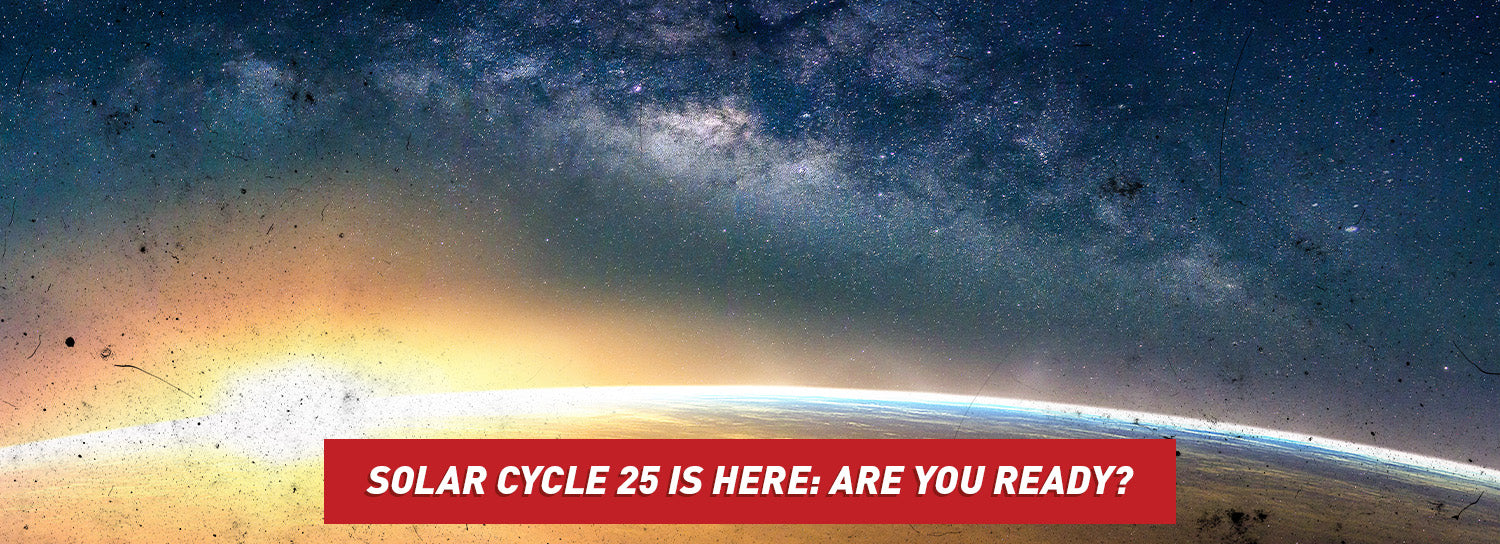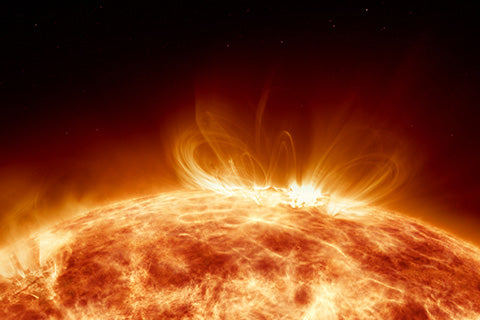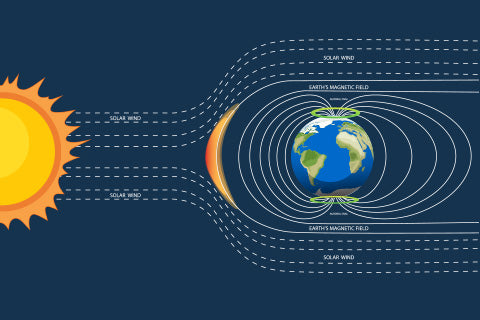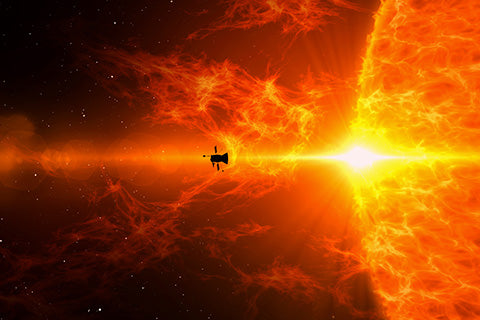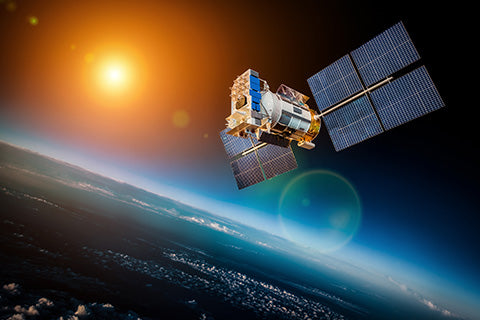Solar Cycle 25 Is Here: Are You Ready?
Brace yourself for blackouts and the failure of GPS systems, satellites, and internet connection.
Solar Cycle 25 is about to rock our world with major solar storms as the cycle reaches its peak.
Solar Cycle 25 began its 11-year cycle in 2019, with the highest level of activity occurring now through October 2024.
Analysis by a team from the National Center for Atmospheric Research predicts that the peak of “this solar cycle may have as many as 230 disruptive sunspots — the highest rate since such activity began being recorded in 1749.”
Here’s what you need to know to better prepare for Solar Cycle 25.
The Ins and Outs of Solar Cycles
The sun goes through a cycle approximately every 11 years, cycling through a period of calm (the solar minimum) to peak activity (the solar maximum), then returning to a period of calm once again.
The period of peak activity is when there are more dark sunspots and solar storms.
This is all caused by the sun’s magnetic field.
Live Science explains:
Every 11 years or so, the sun's magnetic field gets tangled up like a ball of tightly wound rubber bands until it eventually snaps and completely flips — turning the north pole into the south pole and vice versa. In the lead-up to this gargantuan reversal, the sun amps up its activity: belching out fiery blobs of plasma, growing dark planet-size spots and emitting streams of powerful radiation.
Scientists are typically able to predict the solar maximum, but that has proven more difficult for Solar Cycle 25.
Scientists originally predicted the solar maximum around July 2025, but it has arrived much sooner.
According to Scientific American:
In January 2023, scientists observed more than twice as many sunspots as NASA had predicted (143 observed versus 63 estimated), with the numbers staying nearly as high over the following months. In total, the number of observed sunspots has exceeded the predicted number for 27 months in a row.
Hence, the National Oceanic and Atmospheric Administration issued a revised prediction from January 2024 through October 2024.
Possible Effects of Solar Cycle 25
Nicola Fox, heliophysics division director in the Science Mission Directorate at NASA, explains, “As a society, we become more and more reliant on technology. […] We are very susceptible to the vagaries of the sun.”
In other words, if a solar storm occurs during Solar Cycle 25, we will feel the effects.
Tzu-Wei Fang, a researcher at NOAA's Space Weather Prediction Center, explains in Live Science:
If a solar storm does hit, it can ionize Earth's upper atmosphere and fuel radio and satellite blackouts. Big storms that block the planet's connections to satellites can temporarily wipe out long-range radio and GPS systems for up to half the planet. On its own, that is just a minor inconvenience, but if a lengthy blackout coincided with a major disaster, such as an earthquake or tsunami, the results could be catastrophic. […] Strong solar storms can also generate ground-based electrical currents that can damage metallic infrastructure, including older power grids and rail lines.
All the following will be affected:
- Internet commerce
- Supply chains
- GPS systems
- Electrical chips in automobiles
- Cell phone communications
- Power grids
- Satellite transactions
Before you think we are being overdramatic, consider that FEMA and Homeland Security released the Federal Operating Concept for Impending Space Weather Events as directed by Presidential Executive Order (EO) 13744.
The introduction to this handbook of operating procedures states:
Space weather events such as solar flares, solar energetic particles, and geomagnetic disturbances occur regularly and could have measurable effects on critical Earth-based infrastructure, such as the Global Positioning System (GPS), satellite operations, communications, aviation, and the electrical power grid. Space weather events of extreme intensity have the potential to disable large portions of the electrical power grid, resulting in cascading failures that would affect key services such as water supply, healthcare, and transportation.
Just imagine the state of the world if a hurricane-like solar storm hits earth.
You don’t have to imagine. A look back in history shows just what it will be like.
Solar Weather Events in History
The most well-known solar storm is called the Carrington Event, which took place on September 1, 1859.
Richard Carrington, an English astronomer, pointed his telescope into the blue sky over his rural property outside London and discovered the beginning of a global disrupting event.
He noticed "two patches of intensely bright and white light" coming from dark spots on the sun's surface.
Within minutes, the fireballs vanished. But by evening, their effects impacted the world.
Now referred to as the "Carrington Event," these enormous solar flares lit up the Northeastern United States to the Rockies.
The effects on the telegraph and the magnetism in the atmosphere were unlike those from any previous thunderstorms or Northern Lights.
Some telegraph operators received electric shocks. Systems across Europe and North America faltered. Telegraph pylons and wires sparked.
According to History.com:
When American Telegraph Company employees arrived at their Boston office at 8 a.m., they discovered it was impossible to transmit or receive dispatches. The atmosphere was so charged, however, that operators made an incredible discovery: They could unplug their batteries and still transmit messages to Portland, Maine, at 30- to 90-second intervals using only the auroral current. Messages still couldn't be sent as seamlessly as under normal conditions, but it was a useful workaround. By 10 a.m. the magnetic disturbance abated enough that stations reconnected their batteries, but transmissions were still affected for the rest of the morning.
Read more about the Carrington Event here.
Solar storm events have also occurred during our lifetime. For example, a solar storm with solar flares affected Quebec in 1989.
According to NASA:
Just after 2:44 a.m. on March 13, the currents found a weakness in the electrical power grid of Quebec. In less than 2 minutes, the entire Quebec power grid lost power. During the 12-hour blackout that followed, millions of people suddenly found themselves in dark office buildings and underground pedestrian tunnels, and in stalled elevators. Most people woke up to cold homes for breakfast. The blackout also closed schools and businesses, kept the Montreal Metro shut during the morning rush hour, and closed Dorval Airport.
The effects were also felt in New York.
Most recently during Solar Cycle 25, a series of coronal mass ejections erupted from the sun in January 2022.
This caused the Earth’s outer surface to expand from heat and caused 38 of the 49 Starlink satellites launched by SpaceX to burn up.
Prepare Today for Blackouts, Disrupted Communications, and More
Scientists cannot predict exactly when the next solar storm will affect us on earth, but they do know it will happen sooner rather than later.
When it happens, expect the power to be out and the internet to be down for days. Have these supplies on hand for when a solar storm occurs:
-
Food – A major solar storm will halt food production and manufacturing. In addition to stocking up on long-term emergency food that doesn't require power or refrigeration, it's also wise to begin hobby farming. Stock up on heirloom seeds, too.
-
Water – Water treatment facilities require electricity. If the grid goes down, your city-powered faucets will eventually stop. Invest in quality water filtration.
-
Power – Now is the time to invest in a solar-powered generator. You can purchase solar-powered cooking gear in addition to lighting.
- Communication – Start thinking about how you would communicate without cell phones or the internet. Our 4-in-1 Emergency Radio would be a wise addition to your strategy.
Be ready for the storm, friends.
In liberty,
Elizabeth Anderson
Preparedness Advisor, My Patriot Supply
← Older Post Newer Post →


